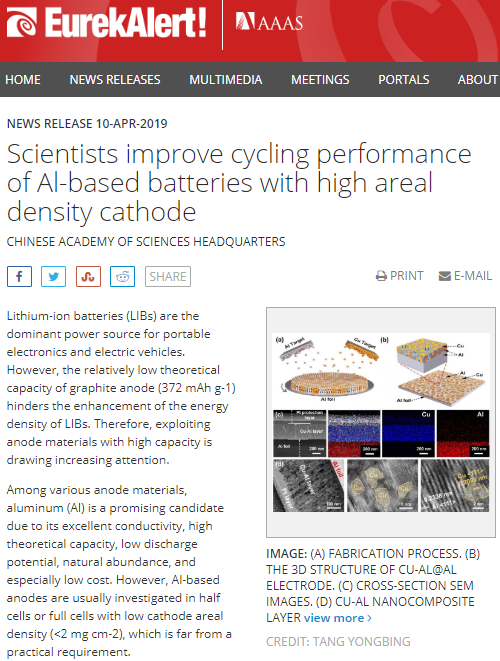
In 2016, the team developed a new lithium-ion battery configuration with high efficiency and low cost, which used an integrated design of aluminum foil to replace the graphite anode and the Cu current collector of conventional LIBs, omitting conventional anode materials. Thus, dead weight and dead volume could be greatly reduced, further improving energy densities of this battery. Nevertheless, this integrated anode also has a problem with cycling stability when assembled with a high areal density cathode.
To tackle the above problem, TANG and his collaborators promoted an inactive (Cu) and active (Al) codeposition strategy to homogeneously distribute the alloying sites and disperse the stress of volume expansion, which is beneficial in obtaining the structural stability of the Al anode (namely Cu-Al@Al). Owing to the homogeneous reaction and uniform distribution of stress during the charge/discharge process, the full battery of Cu-Al@Al assembled with a high LiFePO4 cathode areal density of 7.4 mg cm-2 achieved a capacity retention of ~88% over 200 cycles. This work is published in title of "Uniform Distribution of Alloying/Dealloying Stress for High Structural Stability of Al Anode in High Areal Density Lithium Ion Battery" on Advanced Materials, and is widely reported by media such as American Association for the Advancement of Science (AAAS).

The American Association for the Advancement of Science reports on this research
The link to the news report is as follows:
https://www.eurekalert.org/pub_releases/2019-04/caos-sic041019.php